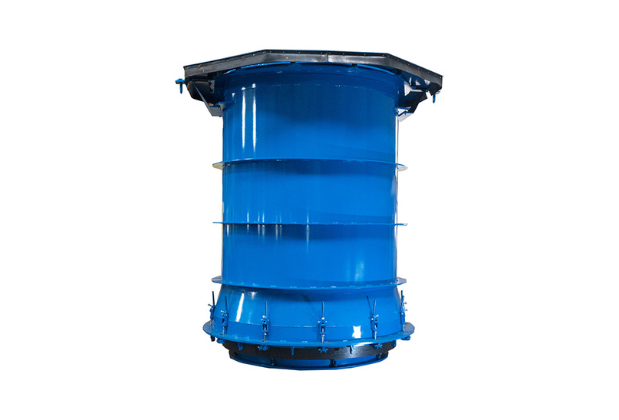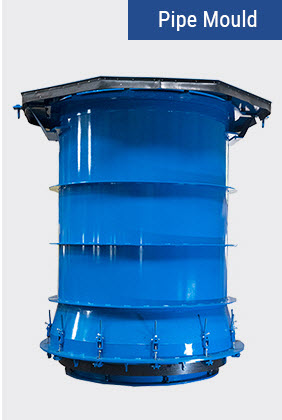
Pipe moulds are essential tools in the construction industry, playing a crucial role in the production of concrete pipes used in infrastructure development. From drainage systems to irrigation projects, concrete pipe moulds ensure the creation of durable and precise components. This step-by-step guide provides a comprehensive overview of using pipe moulds in construction projects, highlighting their significance, applications, and tips for efficient operation.
Understanding Pipe Moulds
Pipe moulds are frameworks designed to shape concrete into cylindrical pipes. These moulds are precision-engineered to meet specific project requirements, ensuring that the final product is durable, uniform, and functional.
Role in Construction Projects
- Facilitate the production of pipes for drainage, sewage, and irrigation systems.
- Ensure dimensional accuracy and structural integrity.
- Allow customization to meet unique project specifications.
Applications of Concrete Pipe Moulds
Concrete pipes produced using pipe moulds serve various purposes in construction:
1. Urban Drainage Systems
Concrete pipes manage storm water in urban settings, preventing flooding and ensuring proper water flow.
2. Sewage Networks
Durable and leak-proof pipes are critical for transporting wastewater, making concrete pipe moulds essential in sewage projects.
3. Irrigation Systems
In agriculture, concrete pipes distribute water efficiently to crops, helping optimize irrigation processes.
4. Industrial Applications
Industrial facilities use concrete pipes for transporting wastewater, chemicals, and other materials.
Tools and Equipment for Using Pipe Moulds
The use of pipe mould equipment streamlines the production process, ensuring precision and efficiency.

Essential Tools
- Mixing Machines: For preparing concrete with the right consistency.
- Compaction Equipment: Ensures even distribution of concrete in the mould.
- Curing Systems: Maintains optimal temperature and humidity for concrete curing.
- Demoulding Tools: Facilitates easy removal of pipes from the moulds.
Modern Advancements
- Automated Pipe Mould Equipment: Integrates multiple processes, from pouring to curing.
- IoT-Enabled Machines: Allow real-time monitoring and predictive maintenance.
Step-by-Step Process for Using Pipe Moulds
Step 1: Preparing the Mould
- Cleaning: Remove any residues from previous uses to ensure a smooth surface.
Step 2: Preparing the Concrete Mix
- Mix Design: Use the appropriate mix of cement, aggregates, water, and, if required, reinforcing materials for pipes.
- Testing: Conduct slump tests to ensure the mix achieves the desired consistency.
Step 3: Pouring the Concrete
- Even Distribution: Pour the concrete into the mould, ensuring it fills all sections evenly.
- Compaction: Use vibrators or compaction equipment to eliminate air pockets and ensure uniform density.
Step 4: Curing the Pipe
- Initial Setting: Allow the concrete to set within the mould for a specified period.
- Controlled Curing: Transfer the pipe to a curing chamber with regulated temperature and humidity to achieve maximum strength.
Step 5: Demoulding
- Timing: Wait until the concrete has achieved sufficient strength before demoulding.
Step 6: Quality Inspection
- Dimensional Checks: Verify that the pipe meets the required dimensions and tolerances.
- Structural Testing: Conduct load and pressure tests to ensure the pipe’s durability.
Tips for Efficient Operation
1. Regular Maintenance of Moulds
Clean and inspect pipe moulds after each use to prevent wear and ensure longevity.
2. Optimize Concrete Mix
Adjust the mix design based on project requirements to enhance pipe strength and durability.
3. Invest in High-Quality Equipment
Using advanced pipe mould equipment improves efficiency and reduces production errors.
4. Train Operators
Ensure that operators are well-trained in handling moulds and equipment for optimal results.
Advantages of Using Pipe Moulds
1. Precision and Uniformity
Concrete pipe moulds ensure consistent dimensions and shapes, meeting project specifications accurately.
2. Cost-Effectiveness
Efficient moulds reduce material wastage and production time, lowering overall costs.
3. Versatility
Pipe moulds can produce a variety of pipe sizes and designs, catering to diverse construction needs.
Choosing the Right Pipe Moulds and Equipment
1. Assess Project Requirements
Determine the size, type, and volume of pipes needed for your project to select suitable moulds.
2. Evaluate Manufacturer Reputation
Collaborate with trusted pipe mould manufacturers that offer high-quality products and after-sales support.
3. Consider Material Durability
Opt for moulds made from robust materials to withstand frequent use and heavy-duty applications.
4. Prioritize Technological Features
Invest in equipment with advanced features.
Conclusion
Pipe moulds are indispensable in construction projects, enabling the production of reliable and durable concrete pipes for various applications. By following a systematic approach and leveraging advanced pipe mould equipment, contractors can achieve efficiency, precision, and cost-effectiveness. With innovations in mould design and technology, the potential of concrete pipe production continues to grow, supporting the development of sustainable and robust infrastructure.
Read More Articles on Pipe Moulds
Recent Articles
- Precast Concrete Box Culvert for Urban Underpasses and Cable Trenches
- How Concrete Pipe Machines Crucial in Power Plant Infrastructure?
- Role of Concrete Pipe Machines in Canal Lining Projects
- How Drycast Technology is Changing the Concrete Pipe Industry?
- Common Mistakes to Avoid When Selecting Pipe Moulds for Your Machine





 BACK TO ARTICLES
BACK TO ARTICLES